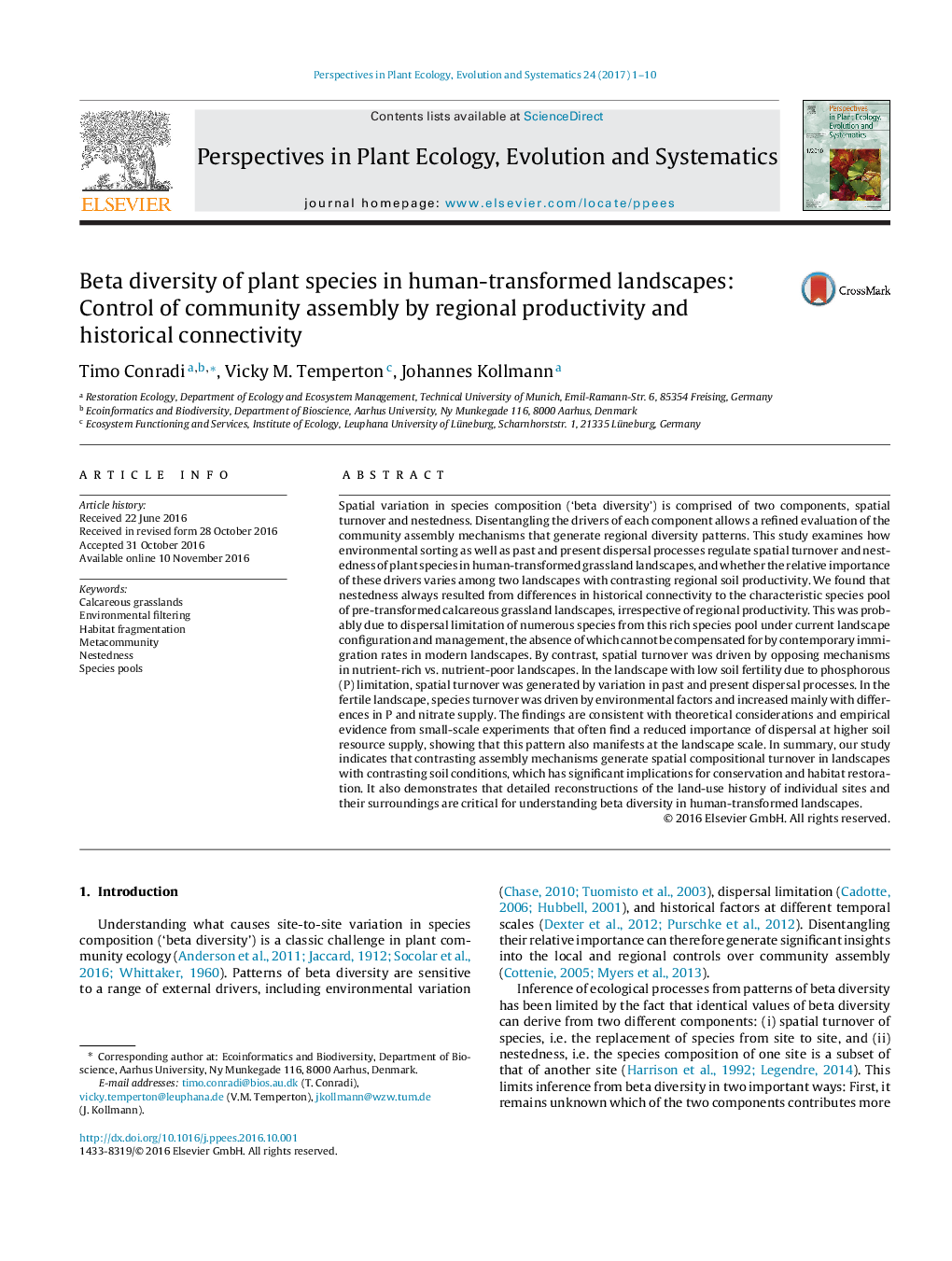| کد مقاله | کد نشریه | سال انتشار | مقاله انگلیسی | نسخه تمام متن |
|---|---|---|---|---|
| 5744977 | 1618596 | 2017 | 10 صفحه PDF | دانلود رایگان |
- Drivers of turnover and nestedness components of beta diversity are evaluated.
- Drivers of turnover differed between two landscapes with contrasting soil fertility.
- Nestedness always resulted from variation in past connectivity to source pools.
- Land-use history crucial for understanding beta diversity in transformed landscapes.
Spatial variation in species composition ('beta diversity') is comprised of two components, spatial turnover and nestedness. Disentangling the drivers of each component allows a refined evaluation of the community assembly mechanisms that generate regional diversity patterns. This study examines how environmental sorting as well as past and present dispersal processes regulate spatial turnover and nestedness of plant species in human-transformed grassland landscapes, and whether the relative importance of these drivers varies among two landscapes with contrasting regional soil productivity. We found that nestedness always resulted from differences in historical connectivity to the characteristic species pool of pre-transformed calcareous grassland landscapes, irrespective of regional productivity. This was probably due to dispersal limitation of numerous species from this rich species pool under current landscape configuration and management, the absence of which cannot be compensated for by contemporary immigration rates in modern landscapes. By contrast, spatial turnover was driven by opposing mechanisms in nutrient-rich vs. nutrient-poor landscapes. In the landscape with low soil fertility due to phosphorous (P) limitation, spatial turnover was generated by variation in past and present dispersal processes. In the fertile landscape, species turnover was driven by environmental factors and increased mainly with differences in P and nitrate supply. The findings are consistent with theoretical considerations and empirical evidence from small-scale experiments that often find a reduced importance of dispersal at higher soil resource supply, showing that this pattern also manifests at the landscape scale. In summary, our study indicates that contrasting assembly mechanisms generate spatial compositional turnover in landscapes with contrasting soil conditions, which has significant implications for conservation and habitat restoration. It also demonstrates that detailed reconstructions of the land-use history of individual sites and their surroundings are critical for understanding beta diversity in human-transformed landscapes.
Journal: Perspectives in Plant Ecology, Evolution and Systematics - Volume 24, February 2017, Pages 1-10
